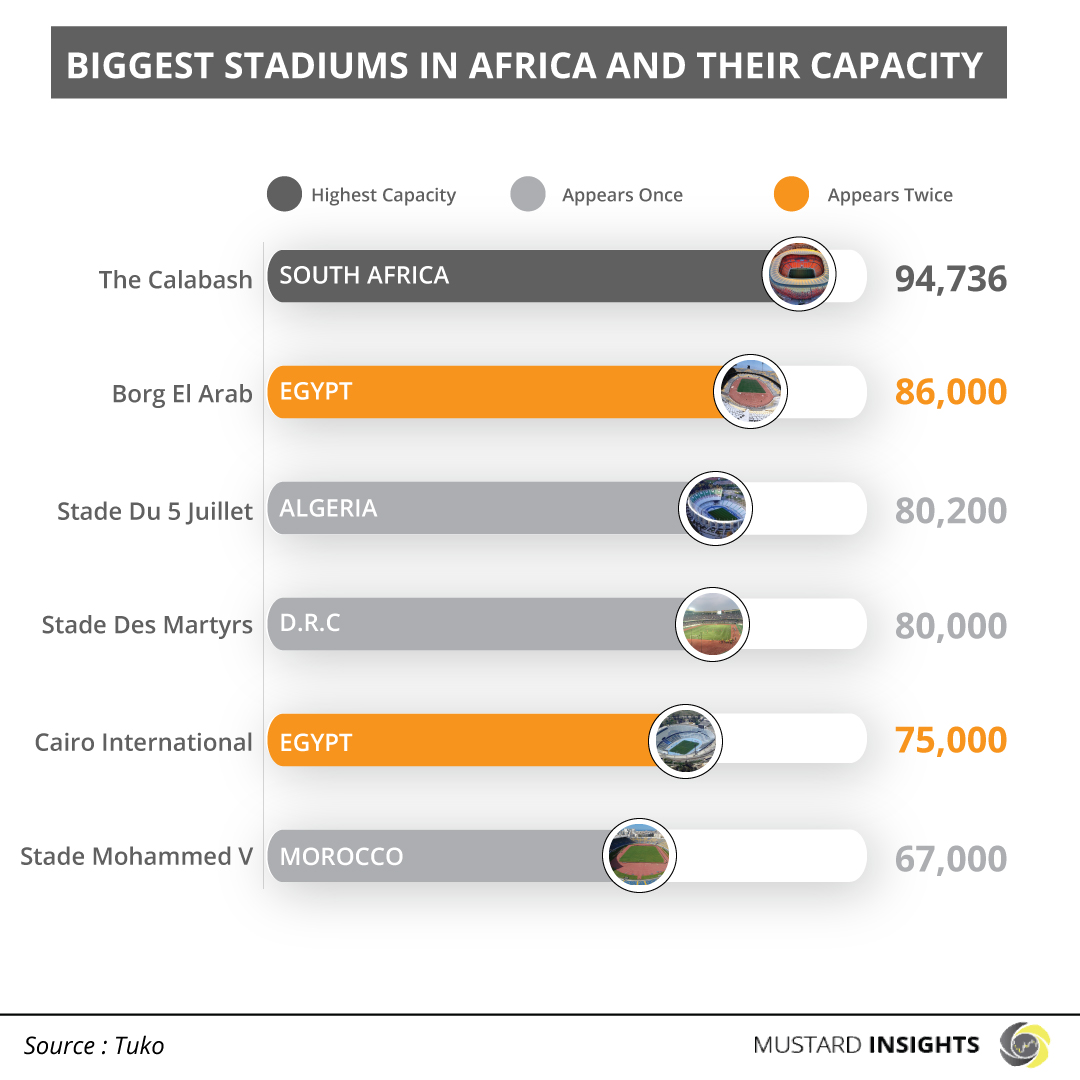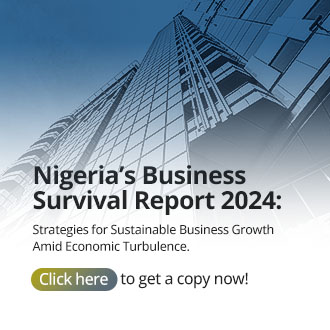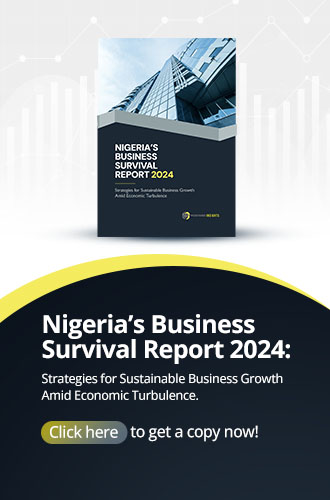South Africa’s stadium (The Calabash) emerges as the biggest stadium in Africa and has the largest capacity. According to data provided by World Atlas, South Africa’s The Calabash Stadium is the biggest stadium in Africa, with a crowd capacity of 94,736. Built in 1987.

South Africa’s stadium (The Calabash) emerges as the biggest stadium in Africa and has the largest capacity. Egypt’s Borg El Arab Stadium ranks second place while Algeria’s Stade Du 5 Juillet ranks third place.
According to data provided by World Atlas, South Africa’s The Calabash Stadium is the biggest stadium in Africa, with a crowd capacity of 94,736. Built in 1987.
Breakdown
Sports are an integral aspect of African culture, with sporting activities such as football, rugby, and track and field events becoming synonymous with modern-day African social and economic structures. Most of these sports take place in stadiums, which have been the basis for the growth of stadia in the continent.
According to World Atlas, South Africa’s The Calabash stadium has three decades of history and heritage, including being the main stadium for the 2010 World Cup, associated with its name. The Calabash goes by various other names, the best known of which are the FNB Stadium, Soccer City and The Calabash (after its iconic shape).
Besides sporting events, The Calabash is also renowned as the venue of Nelson Mandela’s historic first speech after his release from prison in 1990, as well as his memorial service in 2013.
Egypt’s Borg El Arab ranks the second biggest stadium in Africa with a crowd capacity of 86,000 and built as part of Egypt’s bid to host the 2010 FIFA World Cup, which ultimately took place in South Africa.
The stadium’s other names are El Geish and Alexandria. Unlike most stadiums in Africa, Borg El-Arab was built for one purpose: football. The stadium host games played by Egypt’s national football squad, and has also hosted several important football matches, including the 2018 FIFA World Cup qualifier between Egypt and Congo.
The Stade Du 5 Juillet Stadium in Algeria is the third biggest stadium in Africa and can accommodate up to 80,200 people. The English translation of the stadium’s name is “the 5th of July” which references 5th July 1962, the day Algeria gained independence from the French colonial regime. Its name references Algeria’s independence day.
The stadium opened to the public in 1972 and has, since then, hosted many international sporting events, including the 1975 Mediterranean Games, the 1978 All-Africa Games, and the 1990 Africa Cup of Nations football tournament. In 2010, the July 5 Stadium recorded an attendance of 110,000 people who came to see the national football team play against Serbia.
The fourth largest stadium in Africa is the “Stade des Martyrs” or “Stade des Martyrs de la Pentecôte”. In English, this means Martyrs of Pentecost and has existed since 1994. The stadium is in Kinshasa, the DR Congo’s capital city and can host about80,000 people. It currently hosts two local football clubs, AS Vita Club and DC Motema Pembe. The national football team also plays its home matches at this venue.
Egypt’s capital, Cairo, is the home of Africa’s sixth largest stadium, Cairo International Stadium, with a crowd capacity of 75,000, and opened in 1960. It’s former name was the Nasser Stadium, after the then Egyptian President, Gamal Abd Al-Nasser. The stadium serves as the official home of Egypt’s national football squad.
In 2005, it underwent extensive renovations to prepare for hosting the African Cup of Nations football tournament the following year. The stadium is not the official home of any local football club, though it does host significant football matches involving local teams like Al Ahly and Zamalek.
The Stade Mohammed V Stadium, built in 1955, is the jewel of Casablanca and home to Morocco’s national football team. It also houses teams of both Raja Casablanca and Wydad Casablanca. The stadium has a crowd capacity of 67,000 and has once entertained a record number of 100,000 spectators who gathered to watch the aforementioned rivals, Raja and Wydad, in 1997.
Thoughts?
We won't share your email address. All fields are required.
